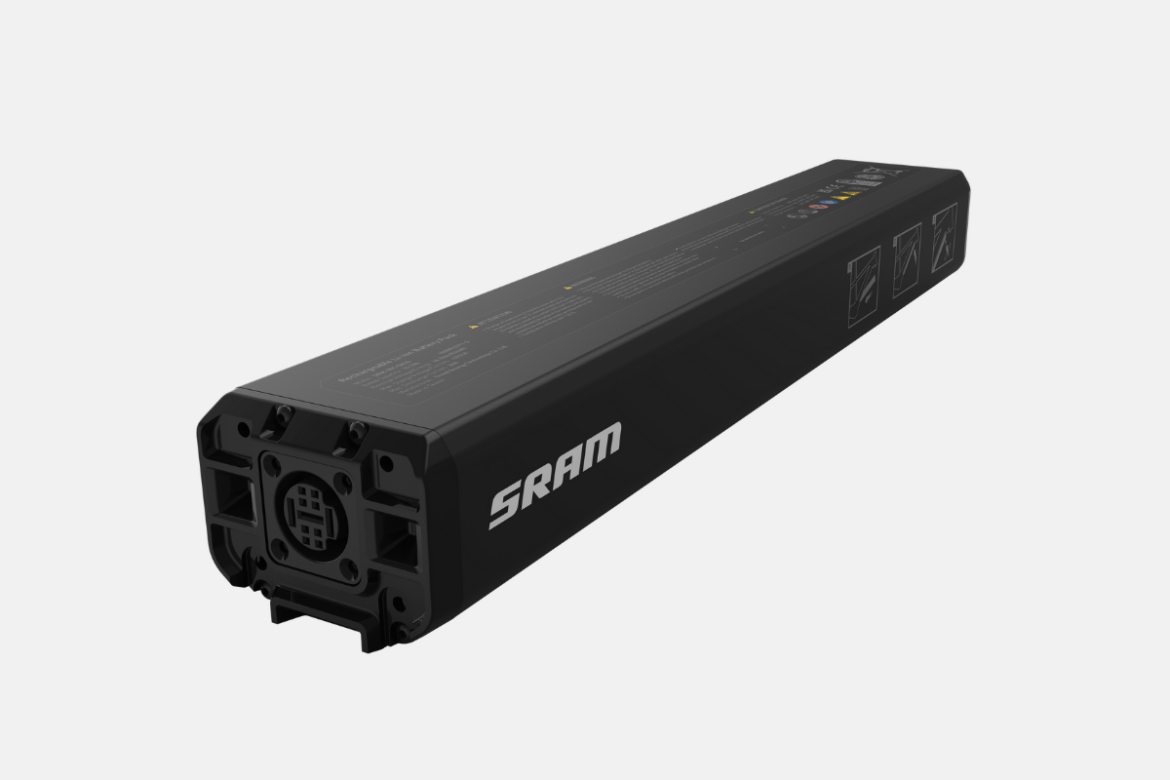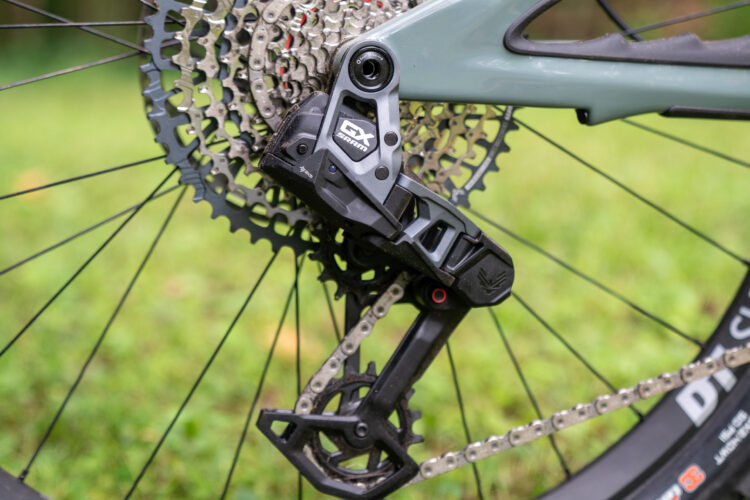
It was only a matter of time before SRAM would deliver a motorized mountain bike drivetrain. And that time arrives today.
Key specs
- Two assist modes: Range and Rally, plus Push mode
- Motor: Brose hardware with up to 90Nm torque, 680W peak power
- Batteries: 630Wh or 720Wh plus a 250Wh range extender
- Auto Shift and Coast Shift features
- Uses a second AXS pod controller
- Integrated with Eagle AXS Transmission drivetrain
- Propain, Nukeproof, and Transition among the first to offer Powertrain bikes
Integration with Eagle Transmission
In a lot of ways Eagle AXS Transmission hinted at what was to come from the new SRAM Eagle Powertrain electric drivetrain system. Not only that, Powertrain was hiding in plain sight at last year’s EWS-E series where pro Yannick Pontal rode the system to clinch the Championship.
For starters, the ability to shift under load is important for high-torque eMTB drivetrains, and Transmission has been designed to excel in this area.

And thanks to the electronic Eagle Transmission derailleur, Powertrain is able to offer an automatic shifting option. Dubbed Auto Shift, the optional mode is designed to automatically shift the rear derailleur based on the rider’s power and cadence, and the system can be tweaked to match each individual’s preferences.
The new SRAM Powertrain electric drivetrain adds a second Pod controller that’s identical to the one used by the Eagle Transmission system. The two buttons are used to toggle power output and control other functions like actuating a wireless AXS dropper post and switching into Auto Shift mode.
SRAM Powertrain includes a feature that allows the rider to shift while coasting. Coast Shift spins the chainring when the pedals aren’t moving, which is not possible with the non-electric Eagle Transmission drivetrain. Shimano’s e-bike drivetrain also offers automatic shifting and the ability to shift the rear derailleur while coasting.
Unlike most of the e-bike systems released to date, SRAM Powertrain has just two assist modes: Range and Rally. The lower power output Range mode is designed to maximize range while Rally delivers more power. And when it’s time to hike-a-bike, Push mode drives the bike at 6km/hr (about 3.7mph).

Battery, display, and motor
SRAM Powertrain features a SRAM designed battery and controller paired with a Brose-designed motor. Two main battery options will be available, along with a bottle cage mounted range extender.
SRAM Powertrain batteries
The larger battery option of the two has a 720Wh capacity and weighs 4.1kg. This battery is meant to be mounted permanently and integrated into a bike’s downtube. Bike brands Propain, Nukeproof, and Transition are set to be among the first to offer Powertrain-compatible bikes. As of the time of publication, only Propain has announced a SRAM Eagle Powertrain bike, the Ekano 2 CF which will be available in October.
A second, 630Wh battery is designed to be removable and can be charged on or off the bike. This battery weighs 3kg and has been optimized to give bikes a lower center of gravity.
SRAM Eagle Transmission AXS derailleurs already have the ability to be powered directly, so riders can choose to connect to the main system battery for power. (Controller pods still use coin-type batteries and are wireless.) Once the system battery level is depleted, the motor no longer delivers power but keeps a small amount of juice in reserve which allows the derailleur to continue operating for about two hours.
SRAM Powertrain Bridge Display
Unlike the Shimano e-bike system that places a small display on the handlebars, SRAM’s Bridge Display sits on the bike’s top tube. The display uses Gorilla Glass which is similar if not identical to the glass used for many smartphone displays. A single button is used to turn the bike on and off.
The color screen displays remaining battery life, the current ride mode, and auto shift status. Since the display is frame mounted, bikes will need to be designed specifically to utilize Bridge Display. And while the Pod controllers operate wirelessly, Bridge Display is wired internally to connect to the system battery and motor.


SRAM Powertrain motor
SRAM chose to partner with Brose for the Powertrain motor, which is fully Brose hardware with a few SRAM-specific tweaks. The motor delivers up to 90Nm of torque and 680W of peak power.
A rear wheel speed sensor communicates with the motor to deliver the right amount of pedal assistance. SRAM notes the system only works with 6-bolt rotors and not Centerlock since the SRAM system makes use of multiple magnets for a more granular speed reading.
And because the motor system is configured based on the bike’s chainring size, it’s not possible to change to another chainring once the bike has been set up.
Pricing has not been announced, though buyers won’t be able to purchase a system directly anyway since bikes need to be specifically designed around the complete system.





















3 Comments
Oct 3, 2023
Feb 25, 2024
Sep 28, 2023